[Here’s a link to other forays around my map.]
“This is June, the month of grass and leaves… I feel a little flustered in my thoughts, as if I might be too late. Each season is but an infinitesimal point. It no longer comes than it is gone.” – Thoreau
I stood under an ash tree reframing my attitude to rain. Parking the grumbles and telling myself how gleaming clean the trees looked. Appreciating the gun barrel granite skies. That kind of thing.
It has been raining hard all week, initially with one of those wonderful clear-the-air summer rainstorms. One of my favourite smells is the air after a storm. It is a smell so profound and distinct that a word had to be invented for it – and so it was In 1964, when chemists Isabel Bear and R.G. Thomas coined “petrichor” from the Greek “petros” (stone) and “ichor”, the blood of the gods. Though our noses get dismissed as amateurs compared to some animals, there is one compound where we do really well; we can smell geosmin, a chemical (C12H22O) released by dead microbes (commonly Streptomyces bacteria) and which causes that earthy smell, at a level of 5 parts per trillion. To put that in context, a shark can smell blood at one part per million. That means human noses are 200,000X more sensitive to geosmin, which is also the source of the earthy taste in some vegetables, than a shark is to blood.
What is this evolutionary relic? Why do we smell dead bacteria and the products of their corpses so well? It’s all speculation at this point and there are lots of questions in biology like that, such as why do mitochondria in most of our cells have their own very specific, very small genome still being reproduced inside our own big genome? It may be that we have been given a mechanism to smell water really, really well because while it’s always been essential, it may have been harder to find unless you were born near a river or conquered whomever was.
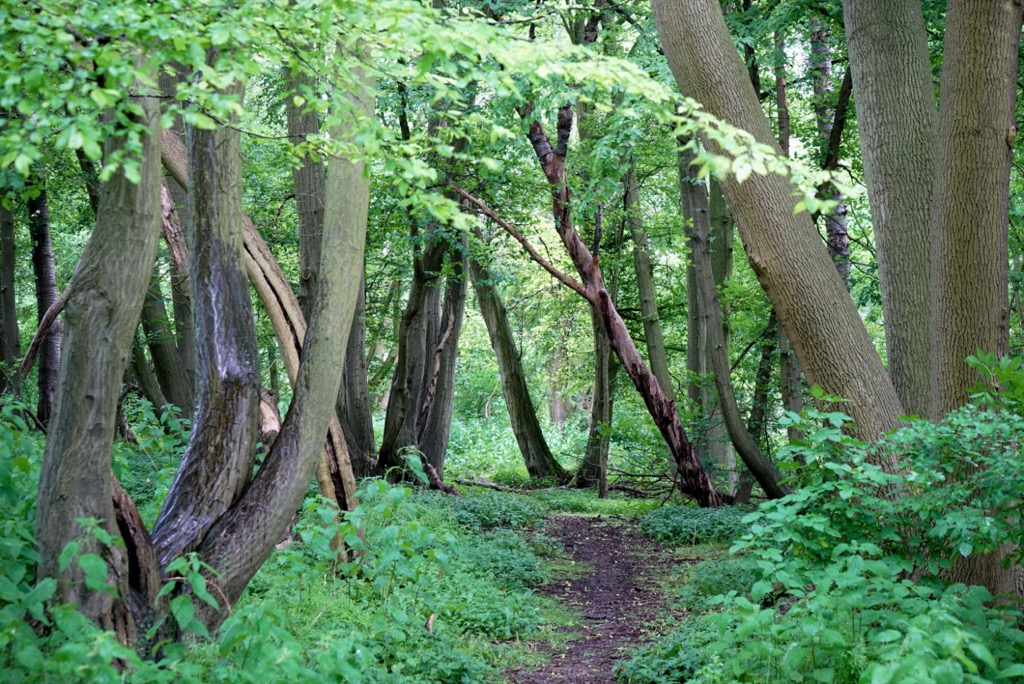

Suitably motivated I ducked down a footpath through a wood shiny with rain and spiky with nettles. So often on this grid squares I think that I must be the first person ever to go on this path. Who else would ever come here to this short path in a farmer’s field going from nowhere to nowhere? But, of course, the footpaths are there because they have been worn out by invisible footprints over hundreds of years, originally as a way to get from somewhere to somewhere, and these days to walk the dog whilst checking emails. Who are or were all these people? Probably because I do these forays during the week’s working hours, I almost never see anyone walking the paths. But that might also be, in part, because I come out even when it’s pouring with rain. I came out today partly through habit (32 weeks into this project, and 32 grid squares), but mostly because it is the summer solstice. June 21st is up there with Christmas Day and my birthday as the most prominent dates in my year. Midsummer. The longest day. The very opposite of the drab, driech dampness that saps my soul every winter. Yet today it is lashing down. And I know from experience that rain is not a rarity on the summer solstice: for many years I encouraged a tribe of enthusiastic adventurers to go sleep on a hill for a summer solstice microadventure challenge.
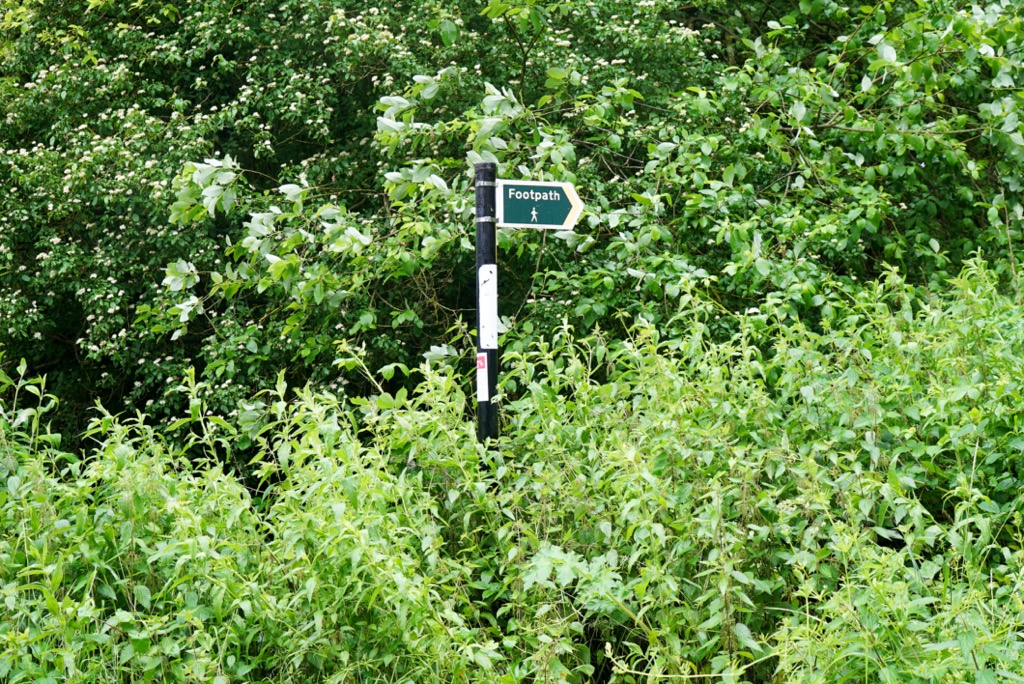
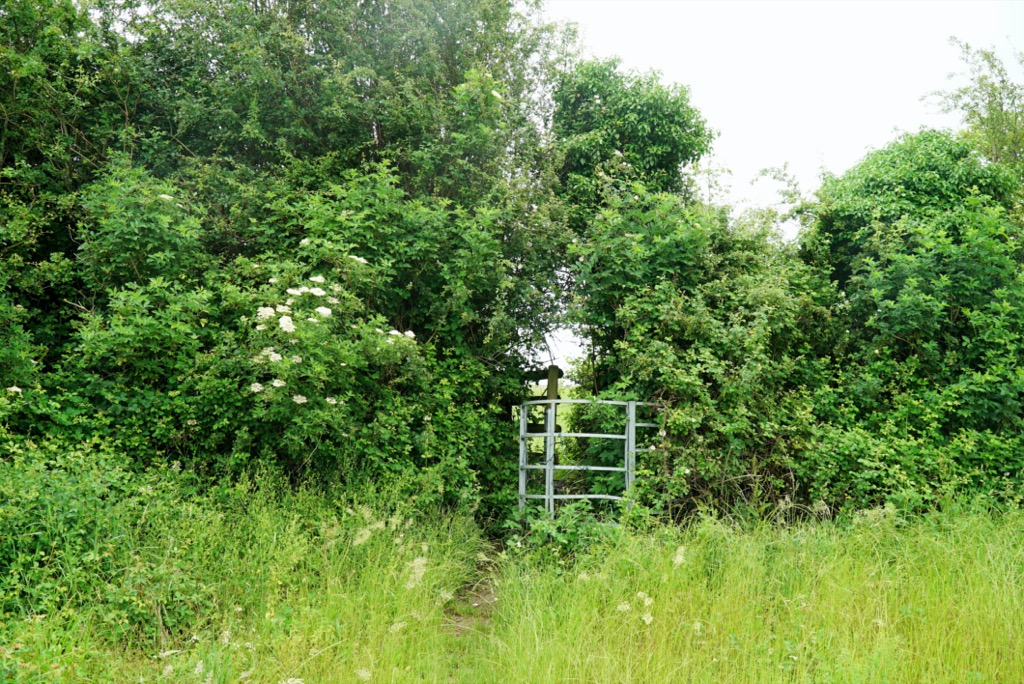
This year I’m meandering around these local woods for my summer solstice. The solstice isn’t always precisely on June 21st, but for ease of managing file space in my brain that is when I always mark it. The summer solstice in the Northern Hemisphere ranges in date from June 20 to 22. This occurs in part because of the difference between the Gregorian calendar system, which normally has 365 days, and the tropical year (how long it takes Earth to orbit the Sun once), which has about 365.242199 days. To compensate for the missing fraction of days, the Gregorian calendar adds a leap day about every 4 years, which makes the date for summer jump backward. However, the date also changes because of other influences, such as the gravitational pull from the Moon and planets, as well as the slight wobble in Earth’s rotation.
In the Northern Hemisphere, the June solstice (aka summer solstice) occurs when the Sun travels along its northernmost path in the sky. This marks the astronomical start of summer in the northern half of the globe. (In the Southern Hemisphere, it’s the opposite: the June solstice marks the astronomical start of winter, when the Sun is at its lowest point in the sky.)
The word “solstice” comes from Latin solstitium—from sol (Sun) and stitium (still or stopped). Due to Earth’s tilted axis, the Sun doesn’t rise and set at the same locations on the horizon each morning and evening; its rise and set positions move northward or southward in the sky as Earth travels around the Sun through the year. Also, the Sun’s track in the sky becomes higher or lower throughout the year. The June solstice is significant because the Sun reaches its northernmost point in the sky at this time, at which point the Sun’s path does not change for a brief period of time.
After the solstice, the Sun appears to reverse course and head back in the opposite direction. The motion referred to here is the apparent path of the Sun when one views its position in the sky at the same time each day, for example, at local noon. Over the year, its path forms a sort of flattened figure eight, called an analemma. Of course, the Sun itself is not moving (unless you consider its own orbit around the Milky Way galaxy); instead, this change in position in the sky that we on Earth notice is caused by the tilt of Earth’s axis as it orbits the Sun, as well as Earth’s elliptical, rather than circular, orbit. Because the Sun is highest in the sky on this day, you’ll notice that your shadow (at local, or solar, noon, not clock-time noon) is the shortest that it will be all year.
Most meteorologists divide the year into four seasons based on the months and the temperature cycle, which allows them to compare and organise climate data more easily. In this system, summer begins on June 1 and ends on August 31. Therefore, the summer solstice is not considered to be the first day of summer, meteorologically speaking.
Astronomically, however, the first day of summer is said to be when the Sun reaches its highest point in the sky, which occurs on the summer solstice (June 20–22). Therefore, the summer solstice is considered to be the first day of summer, astronomically speaking.

I left the wood and followed a footpath along the edge of a field sown with young corn, bright green with fertiliser and clearly tasty to a melanistic black rabbit nibbling away. These dark-coloured animals are not the descendants of released domesticated stock, but are a distinct phase of wild rabbit which appears in small but fairly constant numbers every year. If conspicuous marking or colour was such a disadvantage in the struggle for life, these black rabbits should long since have been wiped out, for surely foxes, stoats, and weasels can see them as easily as we can, yet the black form, though never abundant, persists. In the dusk, when all wise rabbits feed, they are less noticeable, though a black object often shows up in the dark even more than a light one. Perhaps their enemies do not think they look so tasty as the normal brown-grey rabbits. At any rate, the law of heredity produces a certain proportion of these off-colour rabbits every year.
By now my bike wheels were so clogged with mud that I could no longer push the bike and had to resort to carrying it until I reached a road again. So much for midsummer! Jackdaws called noisily overhead. The jackdaw call is a familiar hard ‘tchack’ from which it gets its name.
Unlike the larger and clamorous rook cousins with which they often flock, jackdaws phrases are clipped, their conversations brief.
They pair for life, share food and, when the male barks his arrival at the nest, the female responds with a softer, longer reply. Jackdaws recognise human faces and communicate via their eyes, just as human eye contact plays a major role, and a bird confident with its mentor can ‘read’ that person’s eye motions and will follow them to find hidden food.
Jackdaw numbers are thinned on some shoots, but, in the wider world they represent little threat. Corvids are blamed en masse for small-bird losses, yet magpies, grey squirrels, cats, changes in land use and habitat destruction are the major culprits.
These enigmatic birds have a place in folklore, too. A jackdaw on the roof was said to proclaim a new arrival, but might also be a portent of early death. In the Fens, a jackdaw encountered on the way to a wedding was a good omen.
The bird was well known in the Classical world, but its reputation wavered. Ovid declared that the jackdaw brought rain. Aesop used it derisively in his Fables as a stupid bird that starved waiting for figs to ripen: living on hope, which the Fox says ‘feeds illusions, not the stomach’. The Greeks declared that ‘the swans will sing when the jackdaws are silent’, meaning that the wise will speak after the foolish have shut up.
Suddenly I spotted a crow fly off with a baby bird from a treetop nest. Daily life in nature revolves around such moments of drama. If I had passed by a few seconds earlier or later I would have missed the commotion. There is so much drama that we never witness.
Across the road from the muddy field is a 1960s housing development, tucked unobtrusively onto a wooded hillside. It was built using Radburn design housing to create a pedestrian circulation system that allowed people to walk to the local centre, park and the school without the need to cross a road. It does this by the simple expedient of super blocks 300m by 600m with a series of cul-de-sacs pointing into the centre of each block. These cul-de-sacs provide car access to the front of each home while a separate pedestrian network links to the back gardens via which residents can walk through a central area of open space to local facilities. The layout of the Radburn estate completely turned on its head thinking on housing layout. Not only was it the first to separate cars and pedestrians but as a consequence it also invented the road layout based on distributor roads and cul-de-sacs. In Radburn the entire layout was predicated on cul-de-sacs and the street network was confined to history.

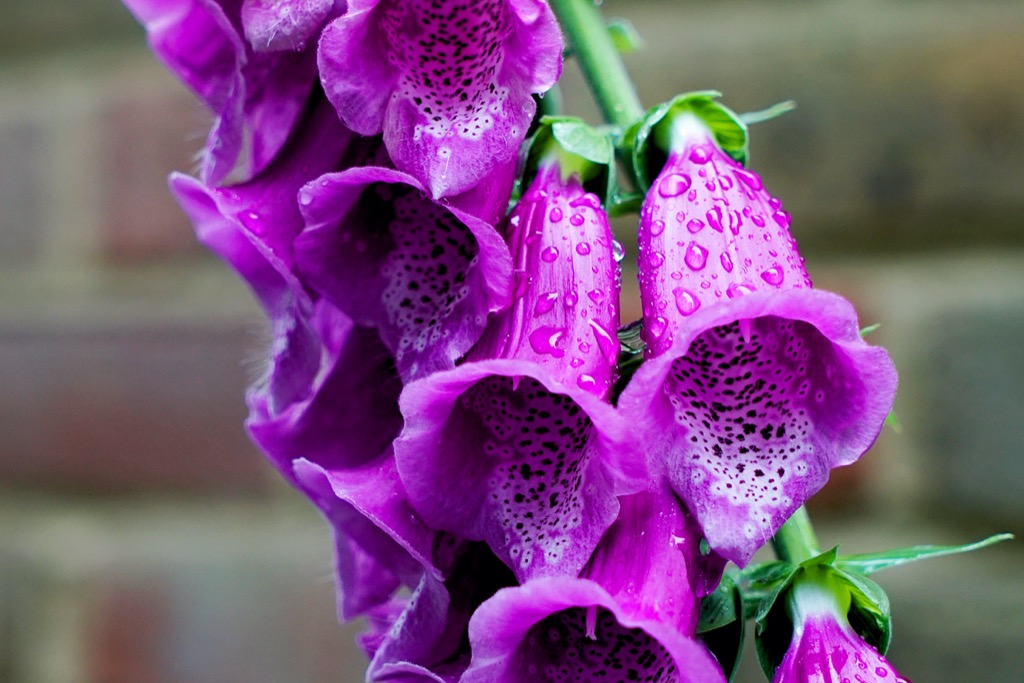
Spending time in woodland always cheers me up, so I was happy to head into the woodland lying on the north of the grid square. I sat still for a few minutes, listening and watching. It always does me good. The blackcaps, wrens and thrushes were in full voice. I thought of how different woods would feel if birdsong was a jarring, stupid noise (like donkeys, sheep or turkeys, say). I wondered why we like bird song. As always on this project, I turned my curiosity to Google. People find birdsong relaxing and reassuring because over thousands of years they have learnt when the birds sing they are safe, it’s when birds stop singing that people need to worry. Birdsong is also nature’s alarm clock, with the dawn chorus signalling the start of the day, so it stimulates us cognitively.
Scientists at the University of Surrey have been studying the “restorative benefits of birdsong”, testing whether it really does improve our mood. They discovered that, of all the natural sounds, bird songs and calls were those most often cited as helping people recover from stress, and allowing them to restore and refocus their attention.
A blackbird flew low towards me on my log then did a hard left turn around a beech tree to evade me, its wings beating like a drum beat. I was hard to spot in the rainy green gloom, dressed in a green raincoat. Nearby was a badger sett with tonnes of sticky earth heaped outside, riddled with flint nodules. It must have been incredibly hard work to dig out.
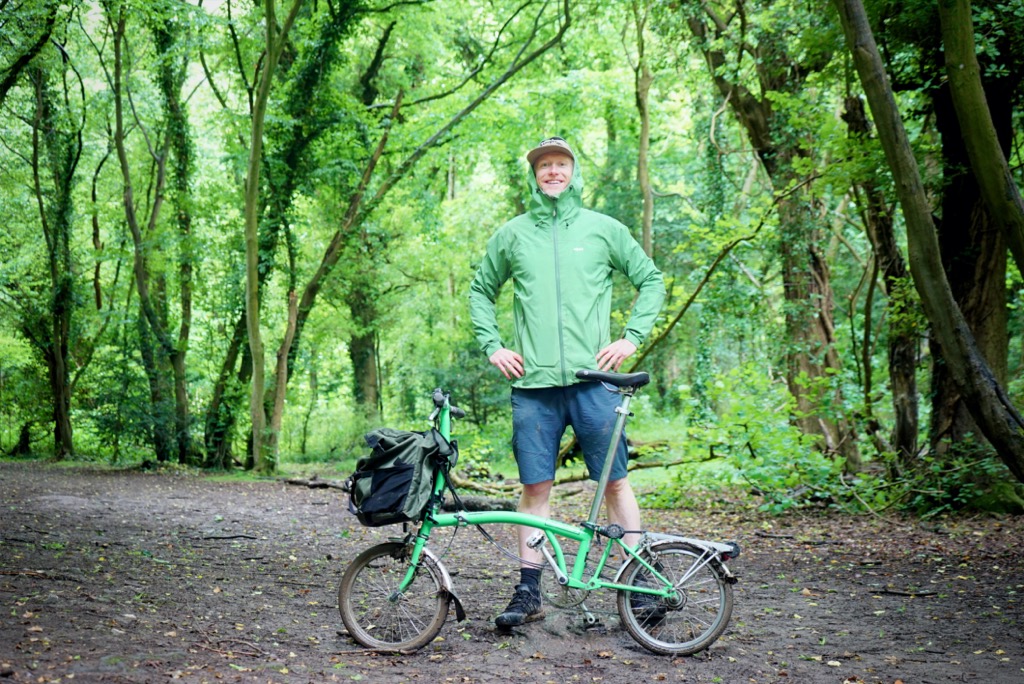
Down at the foot of the hill, out of the woods and past a newly-mowed meadow, a cluster of red poppies stood out against the green hedgerow, their petals crinkled like tissue paper and covered with raindrops like jewels. One species of poppy, Papaver somniferum, is the source of the narcotic drug opium which contains powerful medicinal alkaloids such as morphine and has been used since ancient times as an analgesic and narcotic medicinal and recreational drug. It also produces edible seeds. Following the trench warfare in the poppy fields of Flanders, Belgium during World War I, poppies have become a symbol of remembrance of soldiers who have died during wartime.
The poppy is the enduring symbol of remembrance of the First World War. It is strongly linked with Armistice Day (11 November), but the poppy’s origin as a popular symbol of remembrance lies in the landscapes of the First World War. Poppies were a common sight, especially on the Western Front. They flourished in the soil churned up by the fighting and shelling. The flower provided Canadian doctor John McCrae with inspiration for his poem ‘In Flanders Fields’, which he wrote whilst serving in Ypres in 1915. It was first published in Punch, having been rejected by The Spectator. In 1918, in response to McCrae’s poem, American humanitarian Moina Michael wrote ‘And now the Torch and Poppy Red, we wear in honor of our dead…’. She campaigned to make the poppy a symbol of remembrance of those who had died in the war.
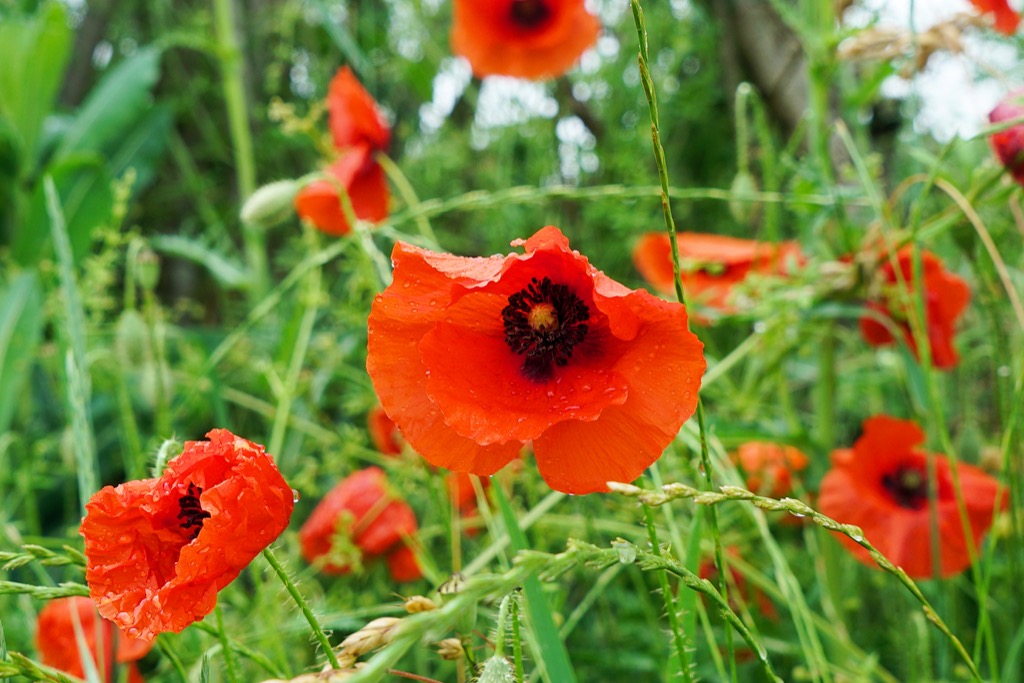
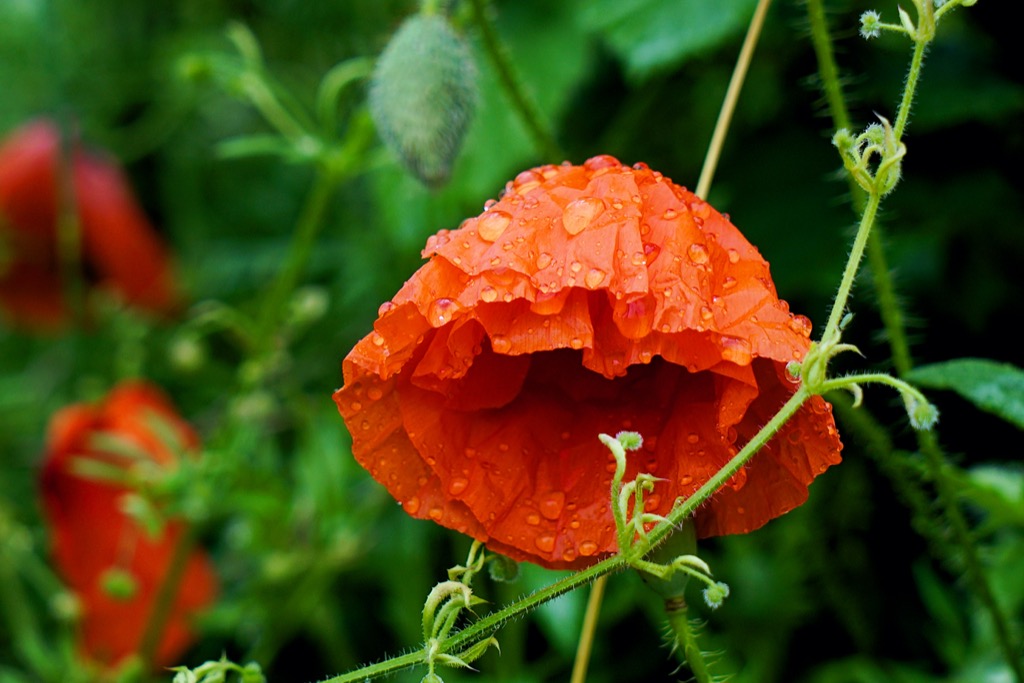
Artificial poppies were first sold in Britain in 1921 to raise money for the Earl Haig Fund in support of ex-servicemen and the families of those who had died in the conflict. They were supplied by Anna Guérin, who had been manufacturing the flowers in France to raise money for war orphans. Selling poppies proved so popular that in 1922 the British Legion founded a factory – staffed by disabled ex-servicemen – to produce its own. It continues to do so today. Other charities sell poppies in different colours, each with their own meaning but all to commemorate the losses of war. White poppies, for example, symbolise peace without violence and purple poppies are worn to honour animals killed in conflict. The poppy continues to be sold worldwide to raise money and to remember those who lost their lives in the First World War and in subsequent conflicts.
Beside the poppies, bumble bees were feasting on the purple flowers of spiky thistles, and Mullein moth caterpillars were shredding giant burdock leaves. Googling offered little information except various gardeners’ strategies for destroying them. Personally I loved their livery of black dots on yellow and white stripes and admired the adult moth’s ingenious camouflage resembling a bit of twig. Much of my expertise about caterpillars comes from enjoying The Very Hungry Caterpillar whose author, Eric Carle, has sold more than 55m copies around the world. For it, he worked in collage, overlaying layers of tissue paper, so creating images in near transparency as well as in deep and multi-layered colours. Stylistically, he drew on his graphic design training and advertising experience to create bold images that made their points simply. From its eloquent opening of a tiny egg alone on a leaf in the moonlight, the story succinctly captures metamorphosis as the caterpillar determinedly eats its way through every child’s dream food before making a cocoon then emerging as a beautiful butterfly. The idea for the format of the book came from playing around with a hole punch and thinking of a worm eating its way through a book; an editor suggested a caterpillar would be a more attractive creature for children. Carle’s deep love and close observation of nature inspired the storyline. Much later, when the book became a bedrock of early learning and even symbolic of it, Carle had to inform parents and teachers that he did know that caterpillars come from chrysalises and not cocoons to prevent an avalanche of correcting correspondence.
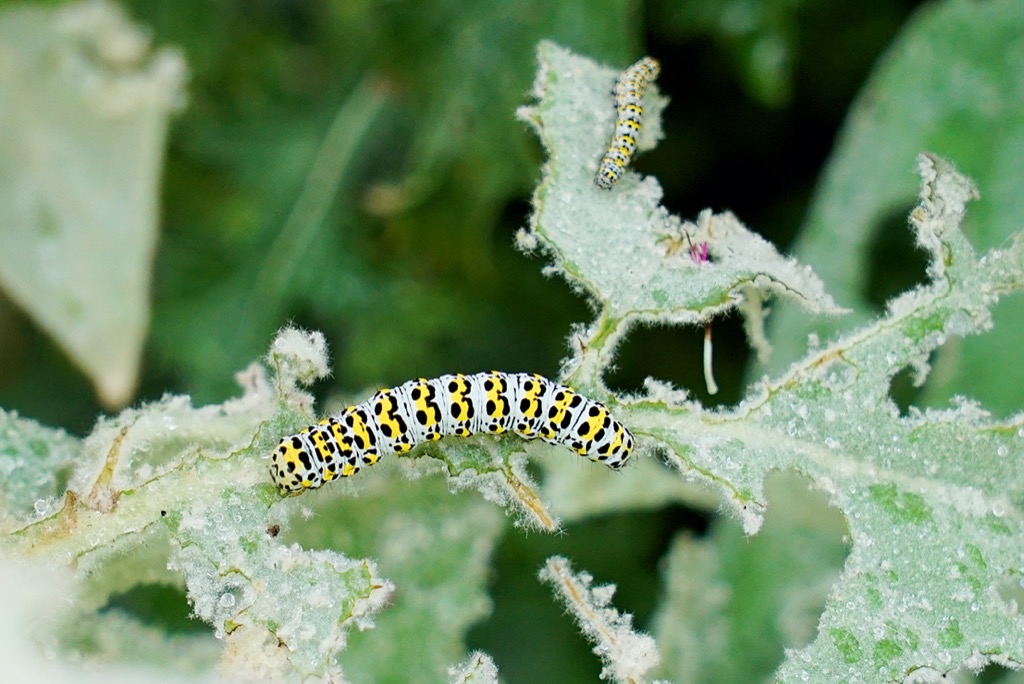
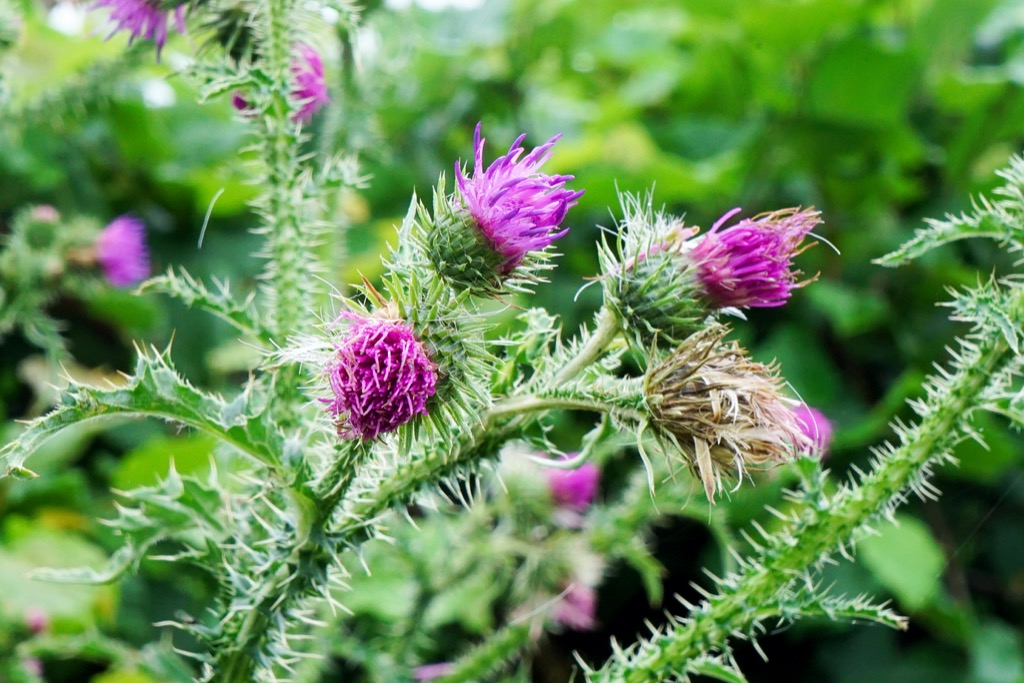



Thank you Alastair. Mind blowing – to find out what the smell that I have enjoyed & taken for granted for 40 odd years was called & why we all are attracted to it. I love this project, especially being from the same area as some of your map squares have covered.
That’s great to hear you are enjoying it (and enjoying petrichor).